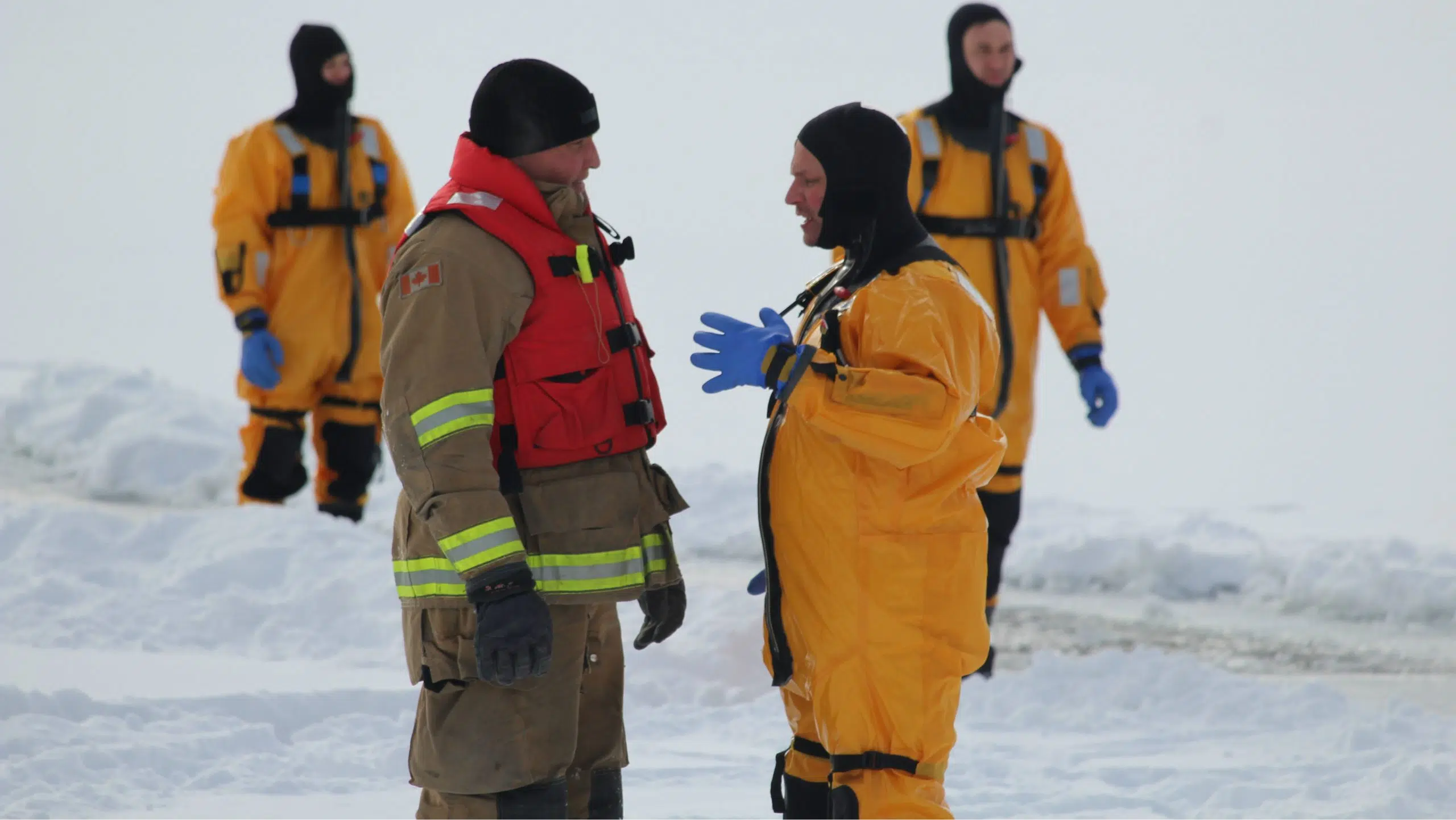
Lethbridge Fire and Emergency Service members brave the cold in ice rescue training
LETHBRIDGE – Members from Lethbridge Fire and Emergency Services held some ice rescue training exercises at Henderson Lake on Wednesday, Feb. 7, to display how they would react when facing an emergency.
Captain Stan Colenutt was one of the members on hand to take part in the training and explained what the Fire Department was looking to accomplish.
“We’re here to do our annual ice rescue training to get our members up to speed on the latest techniques we would use in case of a real emergency where someone was submersed in the ice during winter,” Colenutt said.


